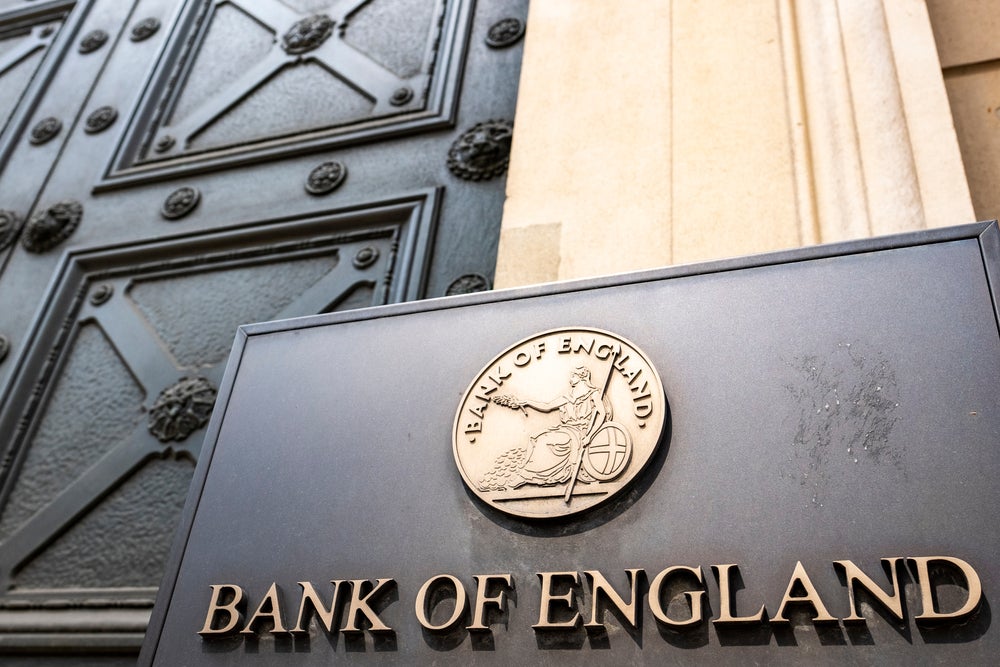Spain’s banks suffered in 2008, just less than banks in
other major economies. But 2009 is shaping up to be a much tougher
proposition, and the almost certain outcome will be market
consolidation. Still, Santander and BBVA were two of Europe’s most
successful banks last year. Rodrigo Amaral and John Hill report.
Annual figures from Spain’s commercial and savings banks
(the cajas) show that the country managed to report a
reasonable performance in 2008. The emphasis that the likes of
Santander and BBVA have put on retail banking, for traditional and
regulatory reasons, help to explain to some extent why they escaped
from the worst of the global downturn.But Spanish banks face a
challenging environment in 2009, not the least because many of them
are highly exposed to a property market in deep crisis. Loan
delinquency rates are growing fast, casting doubts over the
viability of some of the mid-sized and small players to survive as
independent entities. According to the Bank of Spain, delinquency
levels reached 3.29 percent in 2008 across the Spanish financial
system as a whole, the highest since 1997.
“The risk is that it reaches some 6 percent or
7 percent by the end of the year,” says Albert Castillo, an analyst
at Madrid-based Capital Bolsa, an equity research firm.
Powerful regional ties
Talk about imminent mergers are the order of
the day as the most exposed banks seek ways to address mounting
delinquency problems.
The process has already started among the
cajas de ahorros, the 45 powerful regional mutual saving
banks which control around 50 percent of deposits (as of end-of
2007), whose delinquency levels are higher than at commercial
banks. For the savings banks, however, the economic argument for a
merger is often overshadowed by political imperatives that push in
the opposite direction.
How well do you really know your competitors?
Access the most comprehensive Company Profiles on the market, powered by GlobalData. Save hours of research. Gain competitive edge.

Thank you!
Your download email will arrive shortly
Not ready to buy yet? Download a free sample
We are confident about the unique quality of our Company Profiles. However, we want you to make the most beneficial decision for your business, so we offer a free sample that you can download by submitting the below form
By GlobalDataCajas’ boards are dominated by regional
governments, and managers have to tread carefully. Caja Madrid, for
instance, the second largest savings bank in the country, is in the
middle of a tug-of-war between its current chairman, Miguel Blesa,
and the government of the Madrid province.
Another example has been the drama surrounding
the future of Cuenca-based Caja Castilla-La Mancha (CCM). CCM
posted profits of only €42 million ($53 million) in 2008, against
€170 million the previous year, and saw delinquency rates increase
nine-fold to 4.6 percent.
A merger with Malaga-based Unicaja has been
touted – but critics have begun to complain that it is being forced
through by the central government in order to help fellow Socialist
politicians. Last year, a merger between Kutxa and BBK, two Basque
saving banks, failed to materialise after political feathers were
ruffled during the process. Difficulties are even bigger with
mergers across provincial borders, as in the case of CCM and
Unicaja.
On 19 February, ratings agency Fitch
downgraded CCM in light of the impact the “sharp ongoing adjustment
in the Spanish economy and property sector” is having on CCM’s
asset quality and profitability. CCM has a high exposure to the
construction and real estate sectors (44 percent of lending) and,
as at the end of the first half, CCM’s reported Basel II regulatory
Tier 1 capital ratio was only 5.67 percent. Fitch stated: “Support
[for CCM] could be forthcoming through a capital injection by the
Spanish state and/or a merger with a stronger savings bank”.
Roberto López Abad, the CEO of one of Spain’s
largest savings banks, Caja Mediterráneo (CAM), acknowledged that
mergers are set to be the only option for some cajas as they face a
period of zero growth and need to find ways to deal with booming
delinquency rates.
“But it is difficult that a merger agreement
be ruled only by economic criteria,” he said, while presenting the
bank’s 2008 results. CAM posted €390 million in profits, a 1.2
percent increase over 2007, but also reported that delinquency
levels increased six-fold to 3.96 percent.
|
Distribution |
||||
|
Spain – banks ranked by branch |
||||
|
Nos of branches |
Nos of ATMs |
Nos of retail |
Cost-income |
|
|
Santander (Group) |
13,390 |
26,267 |
65 |
41.9 |
|
BBVA (Group) |
7,787 |
17,604 |
47 |
43.7 |
|
la Caixa |
5,530 |
8,113 |
10.7 |
45.2 |
|
Santander (Spain only) |
4,800E |
n/a |
11.2 |
35.5 |
|
BBVA (Spain only) |
3,375 |
4,852 |
n/a |
33.9 |
|
Banco Popular |
2,504 |
3,390 |
6.8 |
31.8 |
|
Banco Sabadell |
1,208 |
1,466 |
n/a |
43.9 |
|
Banco Pastor |
665 |
n/a |
n/a |
35.9 |
|
Bankinter |
372 |
400E |
1.5E |
47.2 |
|
E=estimate Source: RBI |
||||
Commercial bank mergers
Merger talk concerning the country’s
commercial banks has tended to focus on mid-sized firms that saw
their market value plummet in 2008. Banco Popular, Banco Sabadell,
Bankinter and Banco Pastor are often mentioned as possible targets
for acquisition by bigger players or as candidates for mergers
between themselves.
Banco Popular shares have lost more than 70
percent of their value since the start of 2008, for instance,
though all mid-sized banks have suffered badly. La Coruña-based
Banco Pastor has also lost around 70 percent of its market value
since its peak in 2007.
Pastor reported net profits of €164.1 million,
an 18.8 percent drop over 2007, though profits would have reached
€204.4 million if the bank had not directed several millions in
profits to strengthen its provisions, something Spanish banks are
under pressure from the Central Bank to do.
On the plus side, Pastor said its client base
increased 14 percent during the year. But delinquency rates reached
3.6 percent, against 0.82 percent one year before. On presenting
the results, chairman José María Arias denied that negotiations for
the sale of the bank are taking place.
“There is nothing new under the sun,” he said,
though he warned that the full force of increasing loans
delinquency will be really felt in Spain in 2009.
Other mid-sized banks also posted results that
are far from the highs of previous years but do not look too bleak
if compared to their Anglo-Saxon peers in the US and UK. Bankinter,
which focuses on SMEs and affluent clients, had net profits of €252
million, a 1.6 percent increase over 2007 if extraordinary items
are excluded, and boasted that it has the “lowest delinquency
levels” of the European banking system at 1.34 percent.
Banco Sabadell’s profits increased 1.7 percent
to €674 million; Banco Popular saw its profits fall 16.8 percent in
2008, but still reported over €1 billion in net income. Neither of
them looks set to need a merger in the short term, said Castillo at
Capital Bolsa.
“They are more likely to try and strengthen
their balance sheets and to restructure their businesses before
they have to discuss mergers,” he points out. Another analyst said
that executives at Spain’s commercial banks consider mergers
“inevitable” – but in the medium term at the earliest.

Santander and BBVA remain in front
The two market leaders, Santander
and BBVA, have dodged many of the problems faced by global league
rivals like Royal Bank of Scotland, Deutsche Bank and Citi with
their focus on retail banking. Santander, for instance, made 75
percent of its profits from retail banking in 2008.
Despite incurring losses with the Madoff scam
and some problems with customers who owned bonds issued by Lehman
Brothers, Santander increased ‘attributable’ profits by 9 percent
to €8.88 billion (a drop of 2 percent if 2007’s capital gains are
included).
Santander and BBVA have also become two of the
world’s largest financial groups off the back of numerous
acquisitions: in terms of market cap, the two now rank as the
Europe’s second and fourth largest banking groups (€49.6 billion
and €28.3 billion).
Castillo warns, however, that 2009 could bring
problems for the two as countries that escaped the worst in 2008
start to show the effects of the global downturn. Latin America
emerges an area of concern, he said, as the two banks have a huge
presence in the region. BBVA, for instance, is a leading player in
Mexico, whose short-term prospects look bleak – though the bank
itself denies this (see A rich and poor
strategy for Mexico).
For the moment, Spanish banks have managed to
avoid being rescued by the state – and remain some of the world’s
better run institutions. The country’s savings banks have become
firmly established in Spanish society in a way commercial banks and
other mutuals across the world can only dream of (see RBI
602): for 2009, for instance, la Caixa plans to allocate €500
million to its Social Projects – social, community and health
initiatives it is obliged by law to support.
Nevertheless, the next 12 months will be hard.
Some, like la Caixa, the largest savings bank, are preparing for a
new economic environment by shedding costs: it is reported to have
plans to close up to 250 branches by 2010. But Spanish banks are,
collectively, already the most efficient in the world (see
cost-income ratios on table).
| Market statistics | |||||||||
| Spain – selected full-year results, ranked by group profit % change |
|||||||||
| Group profit after tax (€m) | Retail profit after tax (€m) | ||||||||
| Q4 | FY08 | FY07 | % change | Q4 | FY08 | FY07 | % change | ||
| Santander (Spain only) (1) | 1,537 | 5,345 | 5,043 | 6 | 1,079 | 4,152 | 3,880 | 7 | |
| Santander (Group) (2) | 1,941 | 8,876 | 9,060 | -2 | 2267 | 9,376 | 9,085 | 3.2 | |
| Banco Sabadell (3) | -88 | 673 | 782 | -13.9 | n/a | 862 | 825 | 4.5 | |
| Banco Popular | 92.6 | 1,052 | 1,264 | -16.8 | n/a | 890 | 1,163 | -23.5 | |
| BBVA (Group) (4) | 519 | 5,020 | 6,126 | -18.1 | n/a | n/a | n/a | n/a | |
| Banco Pastor (5) | -5.8 | 164 | 202 | -18.8 | -5.8 | 164 | 202 | -18.8 | |
| la Caixa (5) | 231 | 1,802 | 2,488 | -27.6 | 231 | 1,802 | 2,488 | -27.6 | |
| Bankinter | 50.5 | 252 | 361 | -30.2 | 26.8 | 200 | 231 | -13.4 | |
| BBVA (Spain only) (6) | -147 | 1,995 | 3486 | -42.8 | 446 | 1,677 | n/a | n/a | |
| Group assets (€bn) | Retail loans (€bn) | Retail deposits (€bn) | |||||||
| FY08 | FY07 | % change | FY08 | FY07 | % change | FY08 | FY07 | % change | |
| Santander (Spain only) (1) | 394 | 356 | 10.7 | 246 | 235 | 4.7 | 135 | 125 | 8 |
| Santander (Group) (2) | 1049 | 912 | 15 | 555 | 483 | 14.9 | 374 | 279 | 34.1 |
| Banco Sabadell (3) | 80.4 | 76.8 | 4.7 | 52.9 | 51.9 | 1.9 | 39.8 | 41.7 | -4.6 |
| Banco Popular | 110.4 | 107.2 | 3 | 93.3 | 88.1 | 5.9 | 51.7 | 42.7 | 21.1 |
| BBVA (Group) (4) | 544 | 502 | 8.4 | n/a | n/a | n/a | n/a | n/a | n/a |
| Banco Pastor (5) | 27 | 25.3 | 6.7 | 21.2 | 21 | 1 | 13.3 | 12.9 | 3.1 |
| la Caixa (5) | 261 | 248 | 5.2 | 175 | 162 | 8 | 209 | 198 | 5.6 |
| Bankinter | 53.5 | 49.6 | 7.9 | 35.5 | 32.2 | 10.2 | 14.3 | 12.2 | 17.2 |
| BBVA (Spain only) (6) | 319 | 284 | 12.3 | 100.9 | n/a | n/a | 113 | n/a | n/a |
| (1) profit figures are before tax, Spain-only retail loans/deposits include non-retail loans/deposits; (2) retail profit is before tax; (3) commercial and retail are reported as one segment, retail profit is before tax; (4) figures are only broken down geographically not by business segment; (5) mostly retail based on group figures are reported as retail figures; (6) method of retail reporting was changed in 2008 so is incomparable to 2007. Source: RBI |
|||||||||






